Hey fellow ultrarunning enthusiasts! Join me on an unforgettable adventure as I take on the legendary BIGHORN 100, a race that has been on my bucket list for over a decade. This epic trailrunning event in Wyoming is not just a race; it’s a test of endurance, spirit, and love for the mountains. I’m Ultra Kraut Running, and I’m excited to share my journey tackling this grueling 100-mile mountain race on tired legs but with an eager heart.
Why the BIGHORN 100? A Dream Race and a State Challenge
The BIGHORN 100 is no ordinary race. Nestled in the remote wilderness of Wyoming, it’s a classic mountain ultramarathon that draws runners year after year. For me, this race was a natural pick when I set out on a personal challenge to complete a 100+ mile race in every U.S. state. Wyoming had eluded me so far, and the BIGHORN 100 checked all the right boxes: a tough course, breathtaking scenery, and a reputation as both a Western States 100 and Hardrock 100 qualifier.
This would be my fourth 100+ mile event in just eight weeks — a crazy stretch for any runner — but the excitement of finally toeing the line outweighed the fatigue in my legs and feet. I was ready to dive headfirst into this wild Wyoming adventure.
Race Day Morning: The Calm Before the Storm
Packet pickup was buzzing with excitement, and the local community's spirit was palpable. Volunteers and race staff were incredible, making sure everything was set for the big day. The race started at 9:00 a.m. on Friday, and as I stood at the start line counting down, the reality of the challenge ahead hit me.
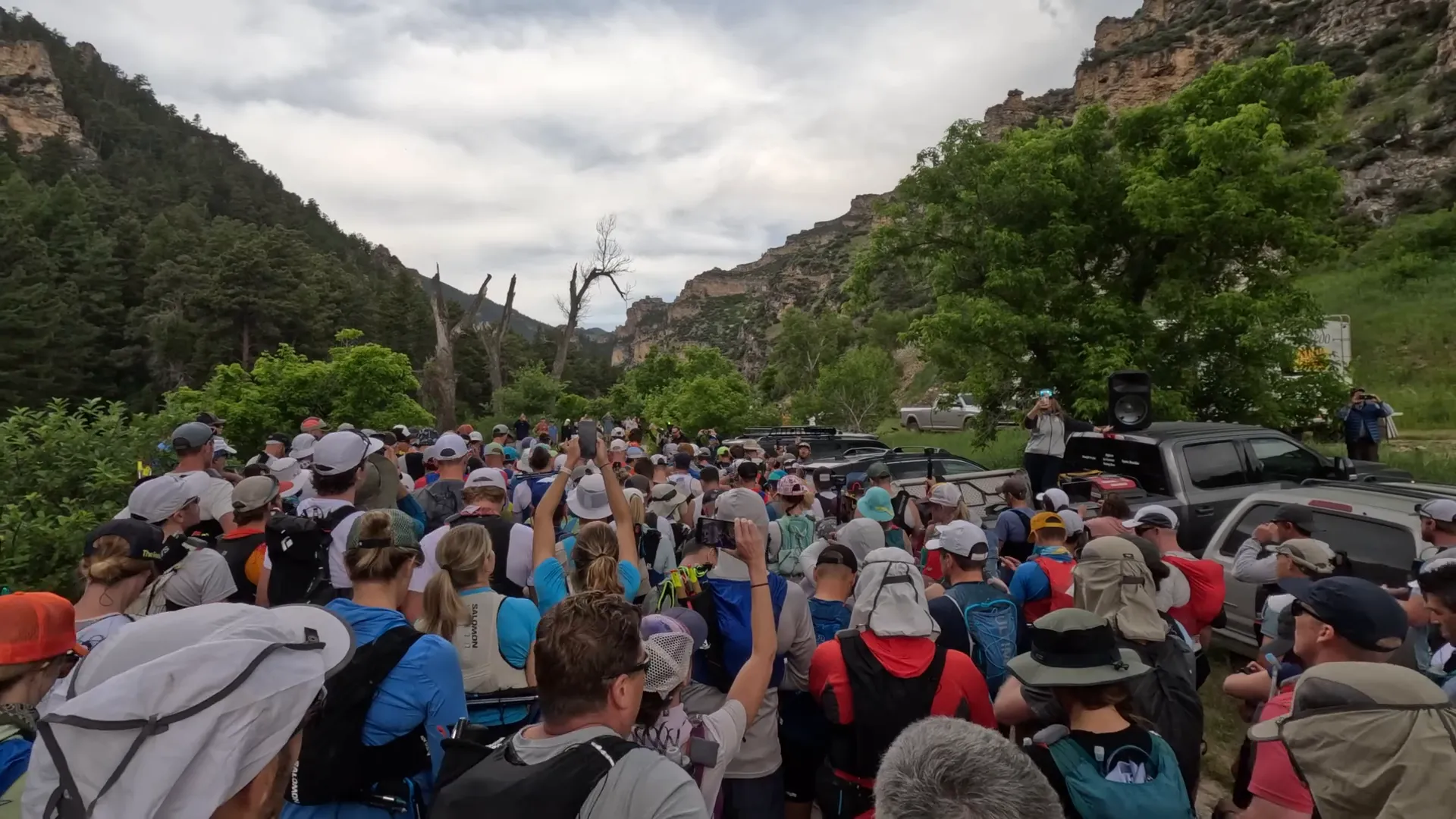
“10, 9, 8, 7…” and we were off into the wild Wyoming mountains! The first few miles were a mix of adrenaline and awe as I soaked in the stunning vistas and prepared mentally for the miles to come.
Early Miles: Climbing, Sipping, and Savoring the Scenery
Within the first hour, I was about 4.25 miles in, already climbing one of the three major ascents. The terrain was demanding, but the views from the top were worth every step. I kept my breathing controlled and focused on pacing myself. I passed two aid stations quickly, but the next one was a bit of a mystery in terms of distance, so I committed to eating and drinking early and often.
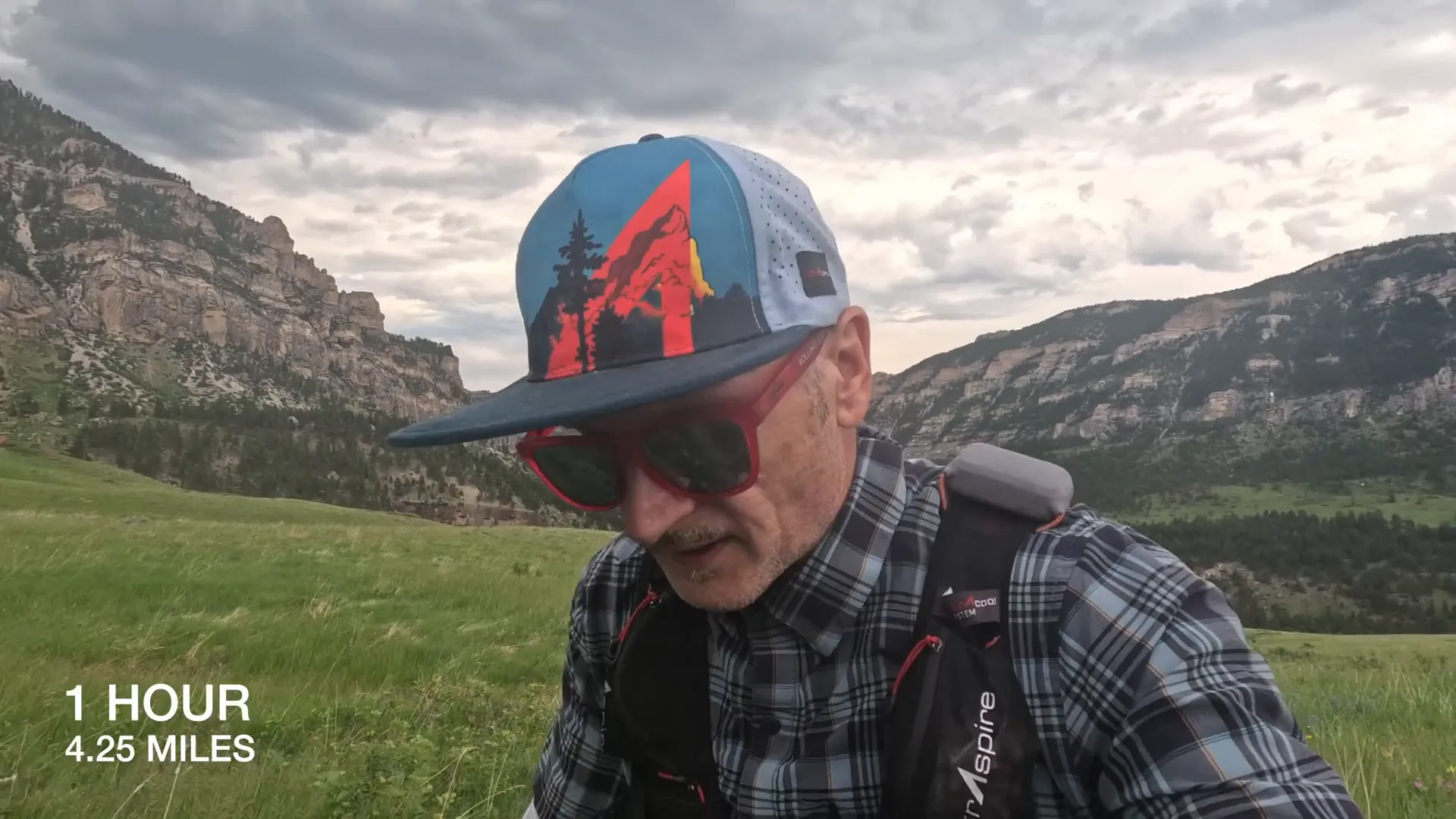
The sun was rising, and the forecast promised a hot day. Sweat was pouring, but there was a breeze that helped cool me down. The landscape was spectacular — wildflowers, endless mountain horizons, and the quiet hum of nature accompanying my steps.
Mid-Race Challenges: Heat, Hydration, and Foot Troubles
By the two-hour mark, I was approaching seven miles, feeling the burn of the climbs and the increasing heat. I was sweating buckets but grateful it wasn’t raining. The dry Wyoming air was harsh, and I realized I needed to adjust my hydration strategy. I was carrying nutrition-infused water but realized I needed plain water to balance electrolytes properly.

At about 8.5 miles, I hit the Upper Sheep Creek aid station. I refilled, took care to eat, and prepared for the next five miles where I would have access to my drop bags. The heat was climbing, but the beauty of the course kept me motivated.
Three hours in, I had covered just over 10 miles. The terrain was a mix of gradual inclines and beautiful trail running sections. I made a conscious decision not to run the inclines to preserve energy for the latter half of the race. My motto was simple: keep moving and enjoy the experience, even when the going got tough.

By five hours, I had reached 19 miles but was struggling with the heat. My hydration was off, and I decided to carry more plain water going forward. The key was to stay conservative and listen to my body. This ultrarunning journey was as much about strategy as it was about raw endurance.
Six hours in, I was at 21.5 miles, moving slowly but steadily. I was cautious with electrolytes, realizing I had overdone it earlier. The sun was still up, and I hoped this careful approach would pay off as the race progressed.
Foot Care: The Unsung Battle of Ultrarunning
Seven hours into the race and nearing 25 miles, the course was beautiful but tough. My feet were giving me serious trouble with blisters and hot spots. I debated whether to reapply Desitin, tape my feet, or just tough it out. The terrain ahead included a 16-mile muddy stretch, which complicated my decision. Fresh socks and lots of lubrication seemed like the best plan at the next aid station.
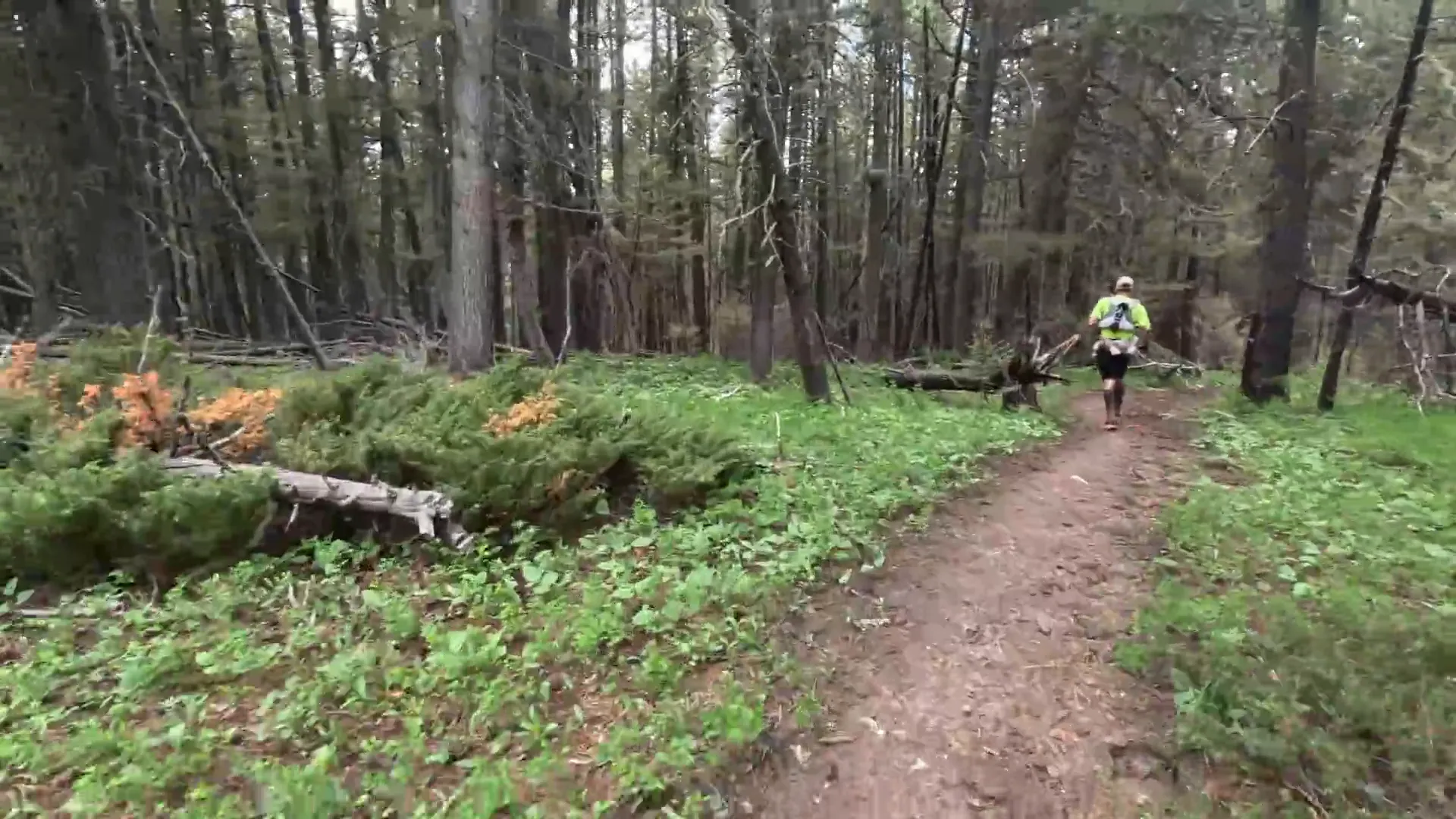
Thankfully, the weather shifted. Clouds covered the sun, temperatures dropped, and some downhill sections helped ease the effort. I soaked in the wildflowers and vistas — moments like these remind you why ultrarunning is so addictive.
Weather Woes: Drizzle, Thunder, and Rain Gear
As the race progressed, light drizzle began, followed by regular thunder. I was grateful to have a rain jacket at the next aid station, ready to face whatever the Wyoming mountains threw at me. I packed a windbreaker too, just in case the drizzle turned into a downpour.
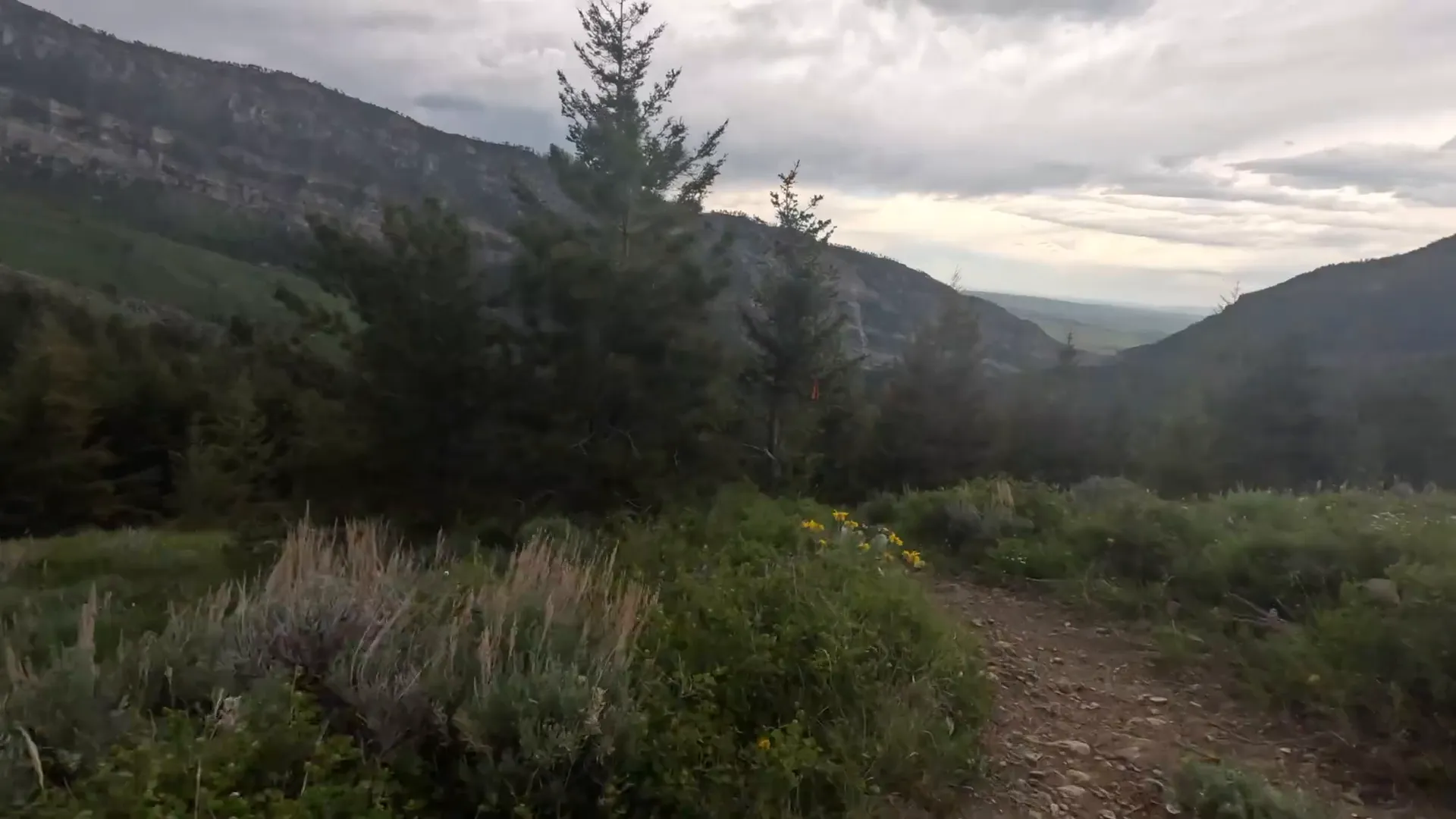
Layering became crucial, with plans to switch between short and long sleeves depending on temperature swings. This attention to detail is vital in ultrarunning, where weather can change rapidly and impact performance.
Halfway Point: Refueling, Reassessing, and Pressing On
At nearly 30 miles, I arrived at a major aid station with drop bags. I took the time to clean and dry my feet, changed socks, and reapplied copious amounts of Desitin. I resisted changing shoes because the muddy 20-mile section ahead would just soak fresh shoes. Instead, I opted for fresh socks and thorough foot care to prevent worsening blisters.
Leaving the aid station, I faced an 18-mile climb. I hoped to reach the top in six hours, aiming for a midnight arrival at the next station. My goal was to maintain a steady pace, conserve energy, and manage nutrition carefully. I taped the balls of my feet and looped my toes with Desitin, preparing for the rough terrain ahead.
Grinding Through the Long Climb: Mental and Physical Persistence
The climb was relentless, a mix of ups and downs that tested every ounce of mental toughness. I kept reminding myself that making up time on the return leg would be tough, so the focus was simply forward progress. With steady pacing, I pushed through the fatigue, knowing that every step brought me closer to the finish.

By the 10-hour mark, I had covered 33 miles. Hydration and nutrition were still top priorities, and I experimented with different hydration bottles to keep calories and water balanced. I moved conservatively, avoiding the temptation to push too hard and risk bonking.
Nightfall and Fatigue: The Toughest Hours
As darkness fell, updates became less frequent. I was moving slower than hoped but still moving. The terrain and fatigue made every mile a battle, and foot pain persisted. I found myself contemplating whether to change shoes and socks again at the next aid station or to just keep going with what I had. The decision weighed heavily, as changing gear could cost precious time but might help prevent further injury.
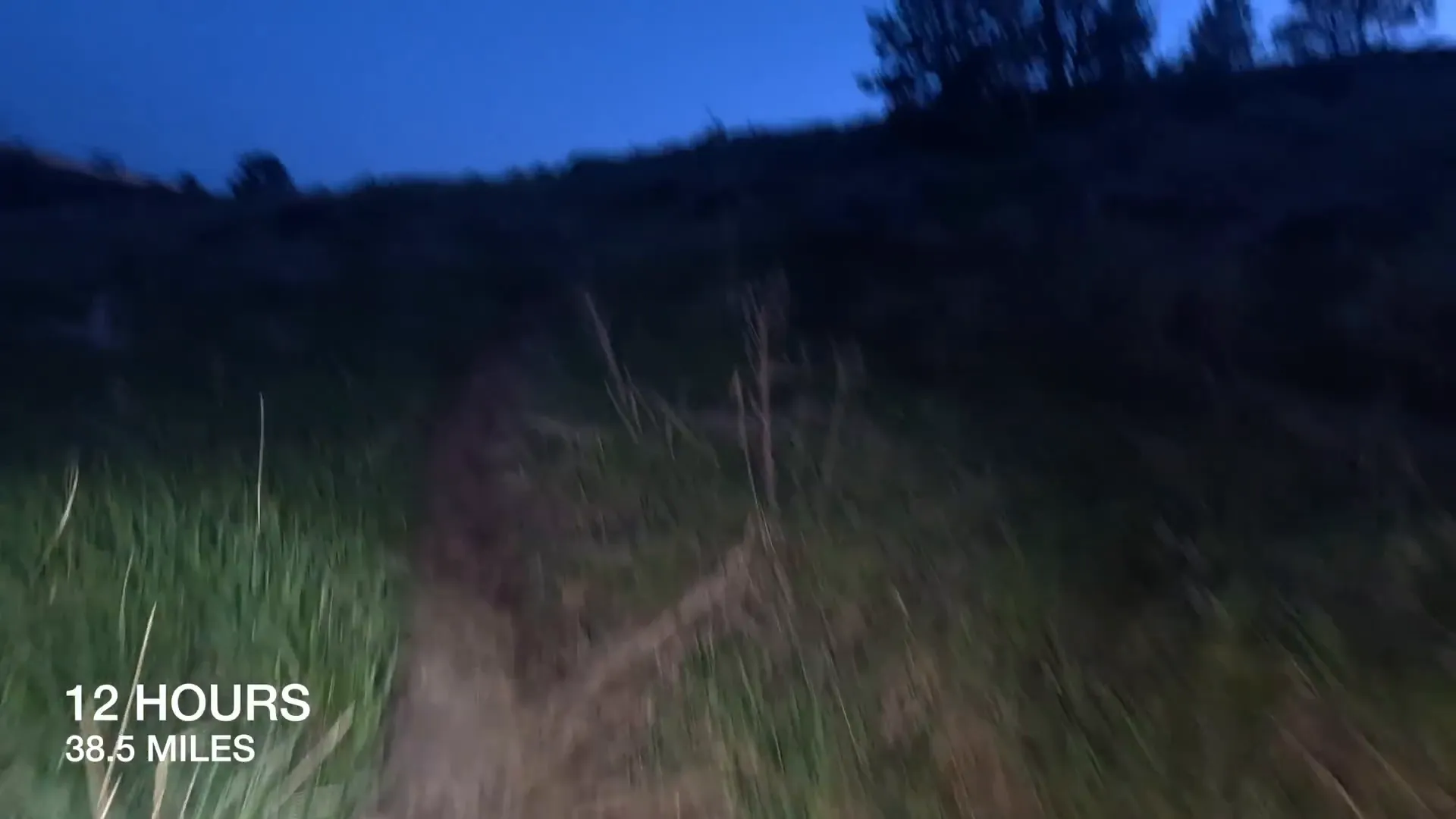
At 38.5 miles, I was 30 minutes behind my planned pace at the aid station, but I reminded myself that finishing was the ultimate goal. The course was stunning, but the physical toll was undeniable. Every step was a testament to perseverance.
Final Push: Fighting for the Buckle
At 57 miles, around the 19.5-hour mark, I was battling for every minute to earn that coveted Big Horn buckle. The race had become a fight against time, my body, and the clock. Feet were blistered and sore, but I seriously considered leaving them alone and just moving forward. Two more opportunities awaited me to change socks and shoes, and I planned to take advantage of those if I could.
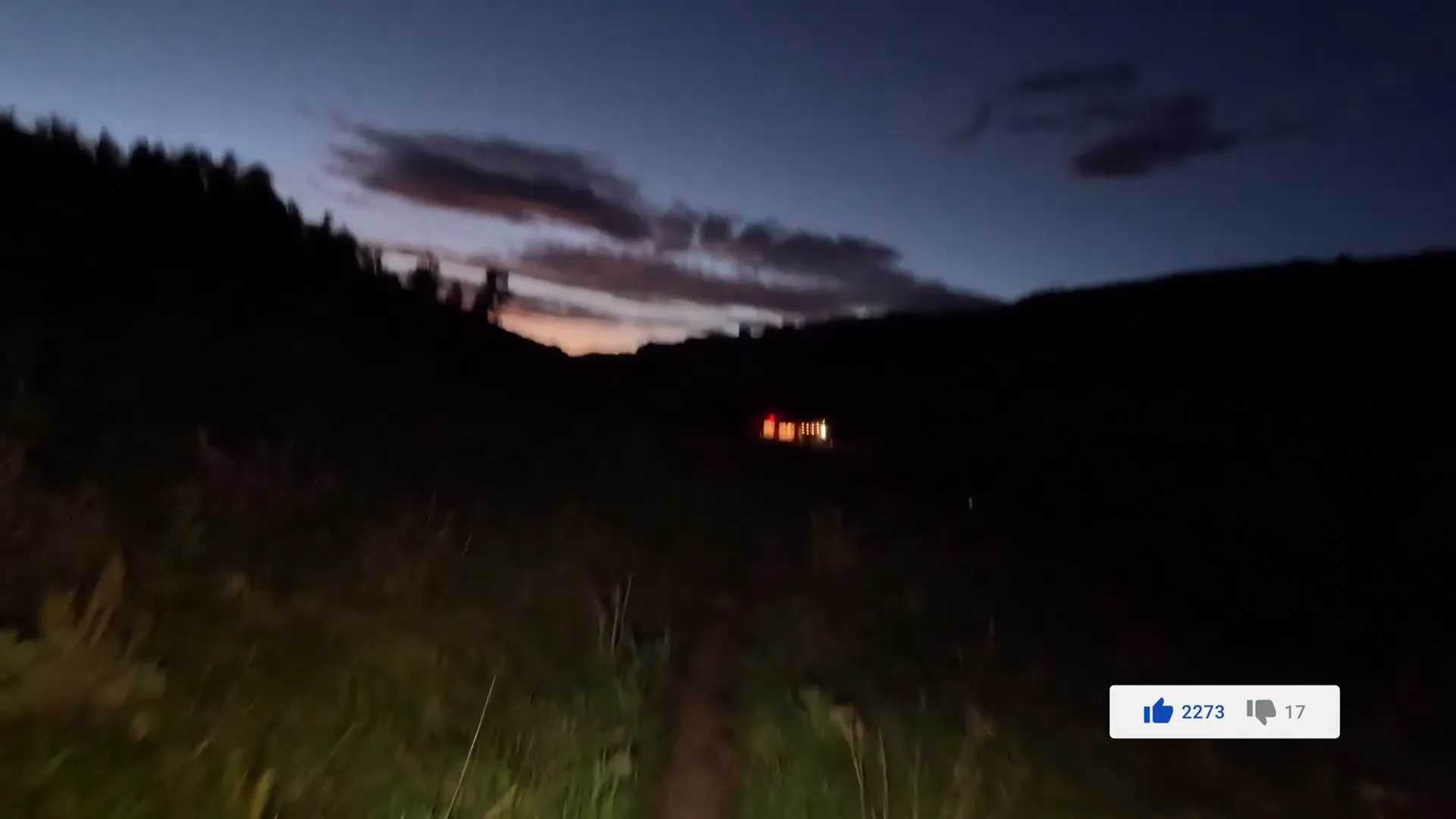
Crossing 60 miles after nearly 21 hours, I felt a small surge of relief but knew the final 40 miles would be just as challenging. The mental game was as fierce as the physical one. I was determined to keep moving, no matter what.
Cutoff Stress: The Ultimate Test of Nerves
As the race approached its final stages, the stress of cutoff times became very real. At 64 miles, I was faced with a tough decision: change shoes and socks, tape my feet, or just keep going. The clock was ticking, and every minute counted. I was only 2.5 miles from a major aid station, and the pressure was intense.
By 70 miles, with 30 miles left, I had about 10 hours to finish — it sounded easy on paper but was anything but. The struggle was real, and the warm weather was unforgiving. Yet, I kept pushing forward, step by step.
Final Climb and Gravel Road to the Finish
At 73 miles, the climb to the next cutoff aid station was daunting. I had about 45 minutes to make it, and the trail seemed to stretch endlessly. It wasn’t just about making the cutoff anymore; it was about having enough time to cover the remaining miles before the cutoff closed.

After a quick turnaround at the aid station, fueled by coke and food, I faced the final 5-mile stretch on gravel road leading into Dayton, Wyoming. The finish line was in sight, but my body was spent.
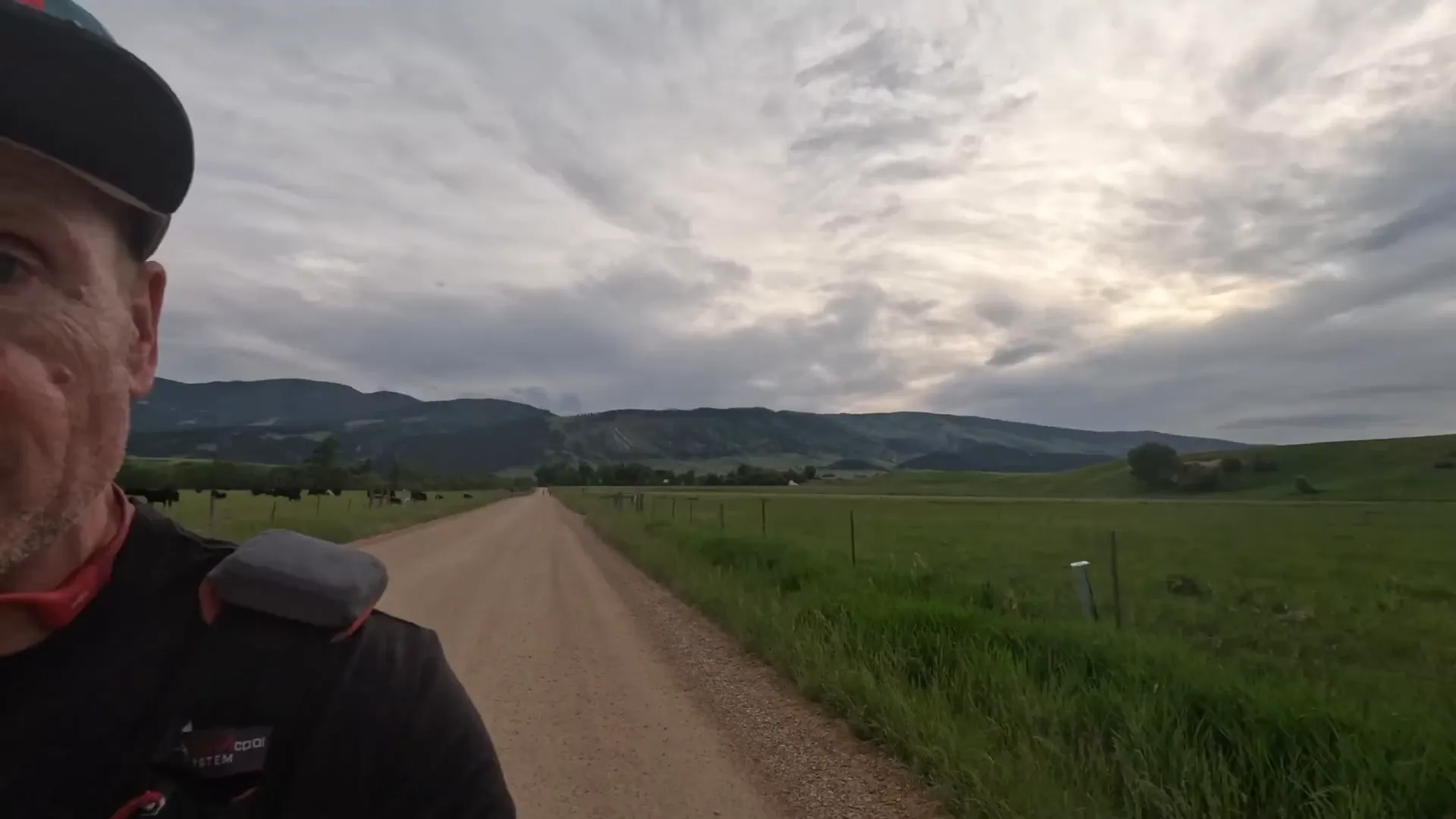
Crossing the Finish Line: Exhaustion Meets Triumph
With just one mile to go, I was running on sheer willpower. The closest I had ever been to a cutoff in any race, the stress was unlike anything I’d experienced before. But I was confident I would finish. This race hurt like no other, but the sense of accomplishment was overwhelming.
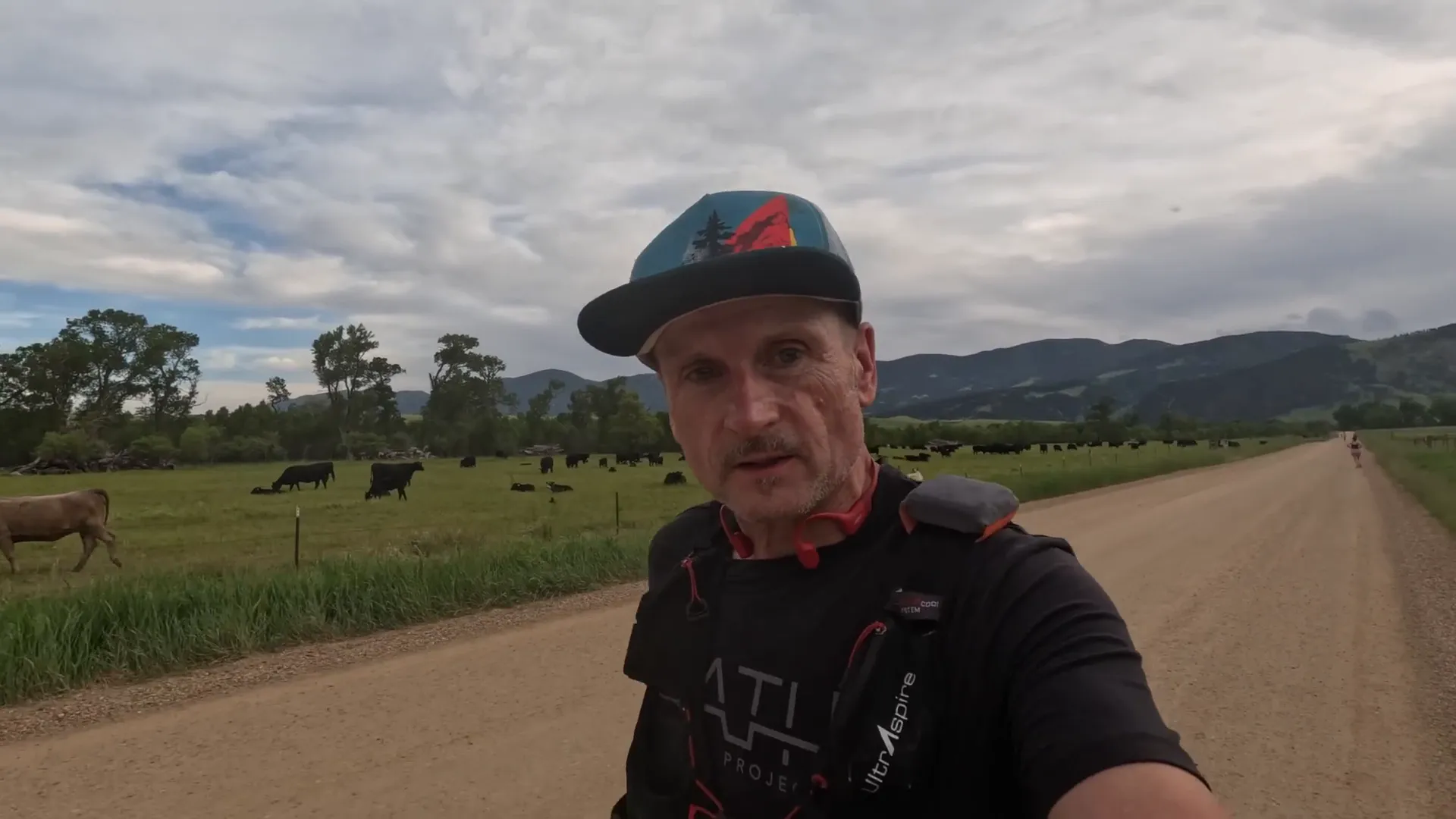
Crossing the finish line in Dayton, Wyoming, I earned my Big Horn buckle — a symbol of grit, endurance, and the wild spirit of ultrarunning. It was a day of highs and lows, of epic views and tough decisions, and a reminder of why I love this sport.
Reflections on the BIGHORN 100 Experience
The BIGHORN 100 is a race that tests every aspect of a runner: physical stamina, mental toughness, strategic thinking, and adaptability. It’s a course that demands respect and rewards those who prepare well and stay resilient.
For those who love ultrarunning, trailrunning, and running in general, this race is a bucket list item not to be missed. The community support, the wild Wyoming landscape, and the challenge itself create an unforgettable experience.
While the race pushed me to my limits, it also reminded me of the joy that comes from pushing boundaries and embracing the unknown. Every step was a story, every mile a lesson, and every finish line a victory.
Final Thoughts and Encouragement
If you’re considering taking on the BIGHORN 100 or any ultramarathon, here are a few tips from my experience:
- Hydrate wisely: Balance electrolytes and plain water to avoid imbalances.
- Foot care is crucial: Prepare for blisters and hot spots with lubrication and timely sock changes.
- Adapt to weather: Pack layers and rain gear; mountain weather can change fast.
- Stay mentally strong: Focus on steady progress, not speed. Enjoy the scenery.
- Listen to your body: Adjust nutrition and pace to what your body needs.
Ultrarunning is a journey filled with challenges and rewards. Whether you’re a seasoned veteran or new to the sport, every race teaches you something new. The BIGHORN 100 was no exception, and I’m grateful for every moment of it.
Thanks for reading this detailed account of my BIGHORN 100 adventure. If you want to see more ultrarunning, trailrunning, and running stories, stay tuned for more from Ultra Kraut Running!



0 $type={blogger}:
Post a Comment